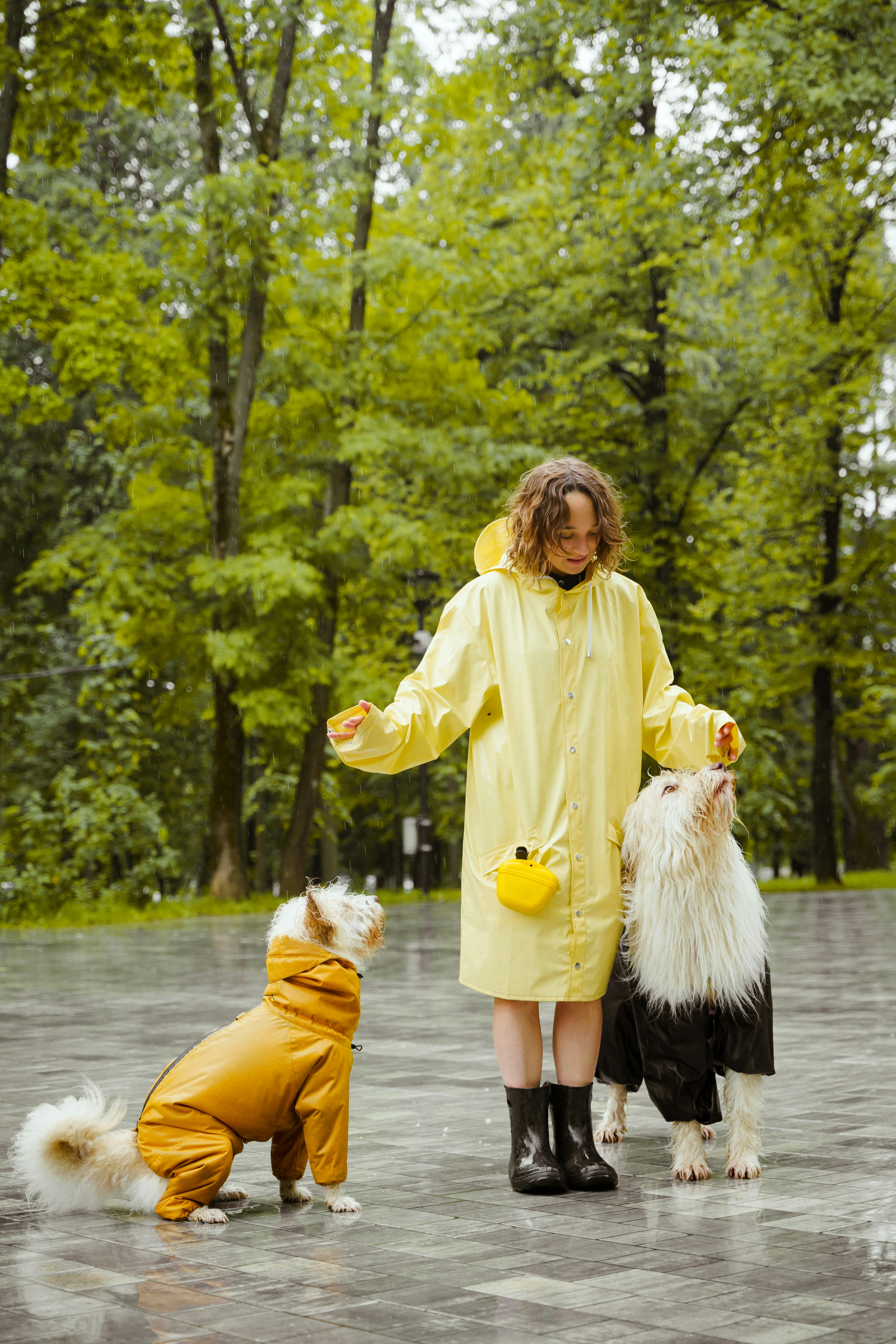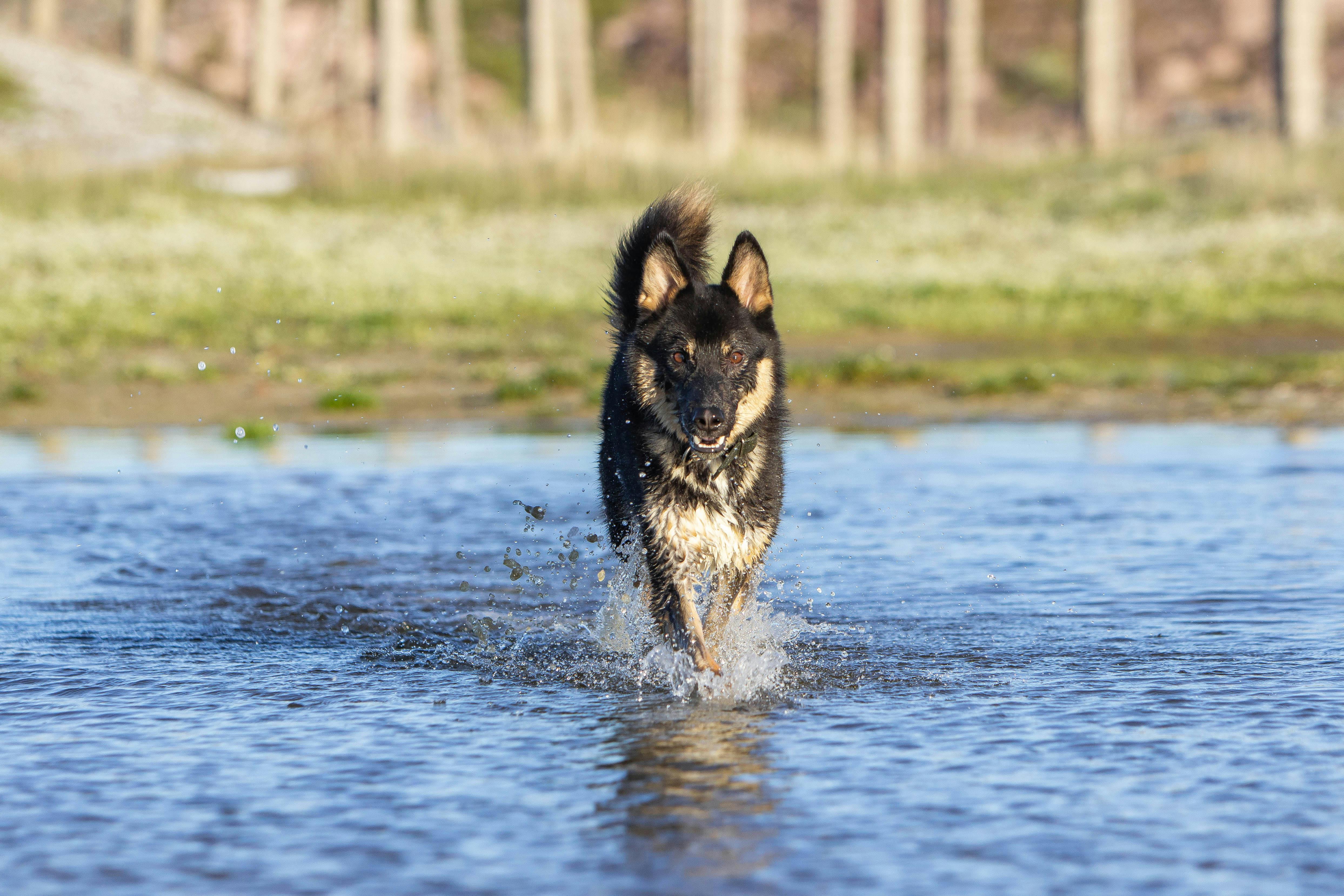Have you ever wonder why your furry friend has a wet nose? This intriguing question has sparked curiosity among dog lovers everywhere. The answer to why do dogs have wet noses is not only fascinating but also essential for understanding our canine companions better. A dog’s wet nose serves multiple purposes that can enhance their well-being and even your bond with them. From acting as a natural thermometer to aiding in their sense of smell, the reasons behind this curious phenomenon are truly captivating. Many pet owners ask, “Is it normal for a dog’s nose to be wet?” or “What does it mean if my dog’s nose is dry?” These questions lead us deeper into the mystery of canine physiology. In this blog post, we will uncover the science behind those adorable, moist noses and discuss how they play a vital role in a dog’s health. So, are you ready to dive into this mystery of wet noses? Your understanding of your beloved pet may just deepen as we explore the remarkable world of dog noses!
The Science Behind Why Dogs Have Wet Noses: A Deep Dive into Canine Anatomy

Have you ever wondered why dogs have wet noses? This question has puzzled many pet lovers and dog owners for years. The moistness of a dog’s nose, while seemingly trivial, actually holds a lot of significance in understanding canine anatomy and behavior. This article takes a deep dive into the science behind those wet noses, revealing fascinating insights into why canine noses are often damp and what that means for our furry friends.
The Anatomy of a Dog’s Nose
First, let’s break down the anatomy of a dog’s nose. Dogs have an impressive olfactory system, which is much more developed than that of humans. Their noses are made up of several parts:
- Nasal Cavity: This is where the air is filtered and warmed before it reaches the lungs.
- Olfactory Receptors: Dogs can have up to 300 million olfactory receptors, compared to a human’s 5 million.
- Jacobsen’s Organ: Also known as the vomeronasal organ, this helps dogs detect pheromones, crucial for communication with other dogs.
The combination of these features allows dogs to have an extraordinary sense of smell, which is essential for their survival and interactions.
Why Are Dog Noses Wet?
So, why do dogs have wet noses in the first place? There are multiple reasons for this, and they all relate back to their health and sensory capabilities:
Enhanced Smell: A wet nose helps trap scent particles. When a dog’s nose is moist, it can absorb more odor molecules, improving their sense of smell. This is crucial for dogs in various roles, such as search and rescue or hunting.
Temperature Regulation: Dogs don’t sweat like humans do. Instead, they cool themselves through panting and the moisture on their noses. A wet nose can help regulate their body temperature, especially on hot days.
Health Indicator: The state of a dog’s nose can indicate their health. A dry nose might suggest dehydration or illness, while a consistently wet nose is often a sign of a healthy dog.
Behavioral Aspects: Dogs often lick their noses, which keeps it moist. This behavior can also be a sign of anxiety, excitement, or curiosity.
Historical Context of Dog Noses
Historically, dogs were bred for specific tasks, many of which relied heavily on their sense of smell. From hunting to herding, the wet nose became an integral part of their anatomy for survival. Ancient civilizations recognized the value of a dog’s sense of smell and began domesticating them for various purposes.
- Hunting: Early humans utilized dogs for tracking and retrieving game, making their keen sense of smell invaluable.
- Herding: Dogs were also trained to herd livestock, using their noses to navigate and communicate with the animals.
Fun Facts About Dog Noses
Did you know that a dog’s nose print is unique, just like a human fingerprint? Here are some other fun facts about dog noses:
- Color Variation: A dog’s nose can come in various colors, including black, brown, and pink. The color can sometimes change with the seasons or due to age.
- Breeds and Noses: Certain breeds, like Bloodhounds, have particularly wet noses, which enhance their tracking ability.
- Dogs and Human Interaction: Dogs often use their noses to communicate with humans, indicating their feelings or needs.
Practical Tips for Dog Owners
Taking care of your dog’s nose is important for their overall well-being. Here are some practical tips:
- Hydration: Ensure your dog has access to fresh water at all times to keep their nose moist and healthy.
- Regular Check-ups: Keep an eye on your dog’s nose. If it becomes excessively dry or cracked, consult your veterinarian.
- Licking Prevention: If your dog frequently licks their nose, it may be helpful to redirect that behavior, as excessive licking can lead to irritation.
Summary of Key Points
- Dogs have wet noses primarily to enhance their sense of smell.
- The moisture traps scent particles, aiding in odor detection.
- A wet nose can help regulate body temperature.
- The condition of a dog’s nose can indicate their health status.
Understanding the science behind why dogs have wet noses not only enriches our knowledge about these beloved pets but also strengthens the bond we share with them. Observing and caring for your dog’s nose can lead to better health outcomes and a happier canine companion. So, next time you pet your dog, take a moment to appreciate that wet nose—it’s an incredible aspect of their anatomy and a vital part of what makes them such wonderful companions.
5 Fascinating Reasons Your Dog’s Nose is Wet: What Every Dog Owner Should Know

Every dog owner has noticed it – that delightful, wet nose that greets you every morning. But why do dogs have wet noses anyway? This is one of those curious mysteries that many people, including veterinarians, have pondered. Here are five fascinating reasons your dog’s nose is wet, and what every responsible dog owner should be aware of.
1. Cooling Mechanism
Did you know that dogs don’t sweat like humans? Instead, they cool off by panting and through their noses. A wet nose helps to regulate their body temperature. When a dog’s nose is moist, it can evaporate water and helps them cool down. It’s like their own personal air conditioning unit!
- Dogs have sweat glands, but they are mostly located in their paw pads.
- A wet nose can lower a dog’s body temperature by allowing moisture to evaporate.
- In hot weather, a moist nose is a sign that your dog is actively trying to stay cool.
2. Enhanced Sense of Smell
Dogs have an incredible sense of smell, up to 100,000 times stronger than humans. A wet nose plays a crucial role in this. The moisture on your dog’s nose helps to trap scent particles, which makes it easier for them to detect and analyze different smells. It’s like adding a turbo boost to their olfactory capabilities!
- Wet noses pick up more scent particles.
- Dogs have about 220 million scent receptors, compared to a human’s 5 million.
- The moisture helps in dissolving scent chemicals, which aids in better detection.
3. Communication Tool
Believe it or not, a dog’s nose is also a communication tool! They use their noses to gather information about their environment and other dogs. When dogs meet each other, they often sniff each other’s noses and behinds to learn more about one another. A wet nose can signal that your dog is healthy and ready to interact.
- Dogs communicate through scent more than through vocalizations.
- A wet nose can indicate excitement and curiosity.
- Dogs can detect pheromones, which are important for social interactions.
4. Health Indicator
Keeping an eye on your dog’s nose can help you monitor their health. A healthy dog typically has a moist and cool nose. If you notice that your dog’s nose is excessively dry, cracked, or warm, it might be time to consult with a veterinarian. Changes in the moisture of a dog’s nose can signify health issues.
- Here are some signs to watch for:
- Dryness or cracking, which could indicate dehydration.
- Excessive wetness, which could signal a health problem.
- Changes in color (e.g., from pink to brown) can also be a red flag.
5. Natural Hydration
Dogs, like humans, need hydration to stay healthy. A wet nose can also be a sign that your dog is well-hydrated. The moisture on their nose can come from the saliva or from drinking water. If you notice that your dog’s nose is dry but they are drinking enough water, it might not be a cause for concern.
- You can ensure your dog stays hydrated by:
- Providing fresh water daily.
- Monitoring their water intake.
- Adding moisture-rich foods to their diet.
Fun Facts About Dog Noses
- Unique Patterns: Each dog’s nose print is unique, much like human fingerprints. You could even use it as a form of identification!
- Color Variations: A dog’s nose color can vary widely, from black to brown, or even pink, depending on the breed.
- Temperature Changes: A dog’s nose temperature can change based on their activity level; it might be cooler after they’ve been resting.
Quick Comparison: Dog Noses vs. Human Noses
| Aspect | Dog Nose | Human Nose |
|---|---|---|
| Sense of Smell | 100,000 times stronger | Less sensitive |
| Moisture Functionality | Cools body, enhances smell | Primarily for breathing |
| Unique Patterns | Unique to each dog | No unique prints |
Understanding why your dog’s nose is wet can help you bond better with your furry friend and keep an eye on their health. So next time your dog nudges you with that cool, moist nose, you’ll know just how fascinating and important it really is! Whether it’s a cooling mechanism, a tool for communication, or a sign of good health, your dog’s wet nose is more than just an adorable feature. It’s a window into their world, providing insights about their well-being and behavior. Always keep an eye on that nose—it tells you more than you might think!
Do Wet Noses Mean a Happy Dog? Exploring the Connection Between Moisture and Mood

When you think about dogs, one of the first things that come to mind is probably their wet noses. But have you ever wondered do wet noses mean a happy dog? The connection between moisture and mood is a fascinating topic, with many pet owners asking, “Why do dogs have wet noses?” Let’s dive into this intriguing mystery and explore the reasons behind those moist snouts.
Understanding the Purpose of a Dog’s Wet Nose
A dog’s nose is not just for show; it serves several important functions. The moisture on a dog’s nose comes from a variety of sources, including saliva and environmental factors, but it plays a big role in how dogs interact with their surroundings. Here are some fundamental reasons why dogs have wet noses:
- Enhanced Sense of Smell: Dogs have a keen sense of smell, and that wet surface helps to capture scent particles. The moisture can trap odors, making it easier for dogs to detect different smells.
- Thermoregulation: Dogs don’t sweat like humans do. Instead, they use their noses to help regulate body temperature. A cool, wet nose can indicate that a dog is able to stay cool.
- Health Indicator: A wet nose is often a sign of a healthy dog. However, it’s worth noting that a dry nose doesn’t always mean something is wrong. Different factors can influence nose moisture, including the weather and the dog’s activity levels.
The Myth of the Happy Dog
While many people think that a wet nose is synonymous with a happy dog, it’s not that simple. Dogs express their emotions in various ways, and a wet nose can be misleading. Here’s a breakdown:
- Excitement: A dog might have a wet nose when they are excited or have just been playing, but this doesn’t necessarily mean they are happy.
- Stress: Sometimes stress can cause a dog’s nose to become wet, especially if they are panting excessively. This can confuse owners who may associate moisture with happiness.
- Health Issues: On occasion, excessive moisture can indicate health problems, such as allergies or infections. Always pay attention to changes in your dog’s nose.
Fun Facts About Dog Noses
- Unique Print: Just like human fingerprints, every dog’s nose print is unique. This means that you could actually use a dog’s nose to identify them!
- Sensitive Surface: The skin on a dog’s nose is packed with nerve endings, making it super sensitive to touch and temperature.
- Nasal Folds: A dog’s nose has folds, which create a larger surface area for collecting scent particles.
Factors Influencing Nose Moisture
There are several factors that can affect how wet a dog’s nose is. Here’s a quick list:
- Weather Conditions: Hot and dry weather may cause a dog’s nose to dry out. Conversely, humidity can lead to a wetter nose.
- Activity Level: Dogs that are active and playful may have wetter noses due to increased panting and saliva production.
- Age and Health: Older dogs may have drier noses, and certain health issues can lead to changes in moisture levels.
What to Look For
If you’re concerned about your dog’s nose, remember to look for:
- Changes in Moisture: If your dog’s nose suddenly becomes very dry or excessively wet.
- Other Symptoms: Keep an eye out for signs of distress or illness, such as lethargy, loss of appetite, or nasal discharge.
- Consulting a Vet: If you notice any concerning changes, don’t hesitate to consult a veterinarian.
The Bottom Line
So, do wet noses mean a happy dog? Not necessarily. While a moist nose can indicate good health, it doesn’t always reflect their mood. Dogs have unique ways of showing happiness, and understanding those signals can lead to a stronger bond between you and your furry friend. Just remember, a wet nose is only one piece of the puzzle in understanding your dog’s overall well-being.
Next time you give your pup a scratch behind the ears or a belly rub, pay attention to more than just that wet nose. Their wagging tail, playful bark, or cuddly demeanor might be the real indicators of a happy dog.
Unraveling the Mystery: How a Dog’s Nose Helps Them Experience the World

Dogs are often called man’s best friend, and for good reason. They provide companionship, loyalty, and love like no other animal. But have you ever wondered why dogs have wet noses? It’s a question many dog owners ponder, and the answer is as fascinating as it is scientific. In this article, we will unravel the mystery of how a dog’s nose helps them experience the world, focusing on that iconic wet nose.
The Science Behind a Dog’s Nose
First, let’s dive into the biology of it all. A dog’s nose is not just a cute feature; it plays a crucial role in how they interact with their environment. Dogs have an extraordinary sense of smell, estimated to be 10,000 to 100,000 times more sensitive than that of humans. This incredible olfactory ability comes from the unique structure of their noses.
- Dogs have up to 300 million scent receptors in their noses, compared to a human’s mere 5 million.
- The part of a dog’s brain that processes smells is about 40 times larger than that of a human’s brain.
This means that dogs can detect scents and pheromones that are completely undetectable to us. But what does this have to do with their wet noses?
Why Are Dog Noses Wet?
Now, let’s focus on the wetness of a dog’s nose. The moisture on a dog’s nose is not just there for decoration. It’s essential for their sense of smell. When a dog’s nose is wet, it helps to absorb scent particles from the air. By having a moist surface, the olfactory receptors can better capture and identify different odors.
Here are some interesting points regarding why dogs have wet noses:
- Enhanced Smelling Ability: The wetness helps trap scent particles, allowing dogs to get a clearer sense of what’s around them.
- Temperature Regulation: A wet nose can help dogs regulate their body temperature. Unlike humans, dogs don’t sweat through their skin. Instead, they rely on panting and the moisture from their noses to cool down.
- Health Indicator: The condition of a dog’s nose can also indicate their health. A dry or cracked nose might suggest dehydration or illness, while a wet nose often indicates good health.
Historical Context of Dog Noses
Historically, dogs were bred for specific purposes, many of which relied heavily on their sense of smell. For example:
- Hunting Dogs: Bred to track game, these dogs depend on their keen sense of smell for locating prey.
- Police and Service Dogs: These dogs are trained to detect drugs, explosives, and even certain medical conditions thanks to their powerful noses.
- Search and Rescue Dogs: Their noses help them locate missing persons in various terrains, from urban areas to wilderness.
Fun Facts About Dog Noses
Did you know that dog noses are as unique as human fingerprints? Here are some fun facts:
- Nasal Prints: Each dog has a unique pattern of ridges and creases on its nose, similar to human fingerprints. This uniqueness can be used for identification.
- Color Differences: The color of a dog’s nose can vary based on breed, genetics, and in some cases, even exposure to sunlight.
- Temperature Sensitivity: A dog’s nose can sense temperature changes in the environment, aiding them in detecting heat sources or cooler areas.
Comparing Dog Noses to Human Noses
Here’s a simple comparison to illustrate the differences between dog noses and human noses:
| Feature | Dog Nose | Human Nose |
|---|---|---|
| Scent Receptors | 300 million | 5 million |
| Smell Sensitivity | 10,000 – 100,000 times | Baseline |
| Moisture Role | Traps scent particles | Minor role |
| Unique Identifier | Yes, each nose is unique | No, fingerprints are used |
Practical Examples of Nose Use in Dogs
You might have seen your dog sniff around or even roll in the grass. Here are some practical examples of how they use their noses:
- Tracking: When dogs follow a scent trail, they are using their olfactory abilities to find something or someone.
- Social Interactions: Dogs often greet each other by sniffing noses, which helps them gather information about one another.
- Detecting Emotions: Dogs can detect changes in human emotions through scent, such as fear or happiness, by identifying pheromones released during different emotional states.
Understanding why dogs have wet noses and how they contribute to a dog’s ability to experience the world can deepen the bond you have with your furry friend. Their noses are not just for show; they are a gateway to a whole new world. So, the next time you see your dog’s wet nose, remember it’s
Is a Wet Nose Healthy? Understanding the Implications of Canine Moisture Levels

When people think about dogs, one of the most common and endearing traits that come to mind is their wet noses. But, have you ever wondered why do dogs have wet noses? Is a wet nose healthy? These questions lead us to explore the fascinating implications of canine moisture levels. It’s not just a quirky characteristic; the moisture found on a dog’s nose might actually have important roles in their health and behavior.
Why Do Dogs Have Wet Noses?
Dogs noses are wet for several reasons. One of the main reasons is that moisture helps with their sense of smell. A wet nose collects scent particles from the air, which enhances their olfactory abilities. Dogs have an impressive sense of smell, estimated to be anywhere from 10,000 to 100,000 times more sensitive than humans. A moist surface captures more scent, making it easier for dogs to identify smells.
Another reason is related to thermoregulation. Dogs don’t sweat like humans do; instead, they primarily cool themselves through panting. The wetness of their noses helps with evaporative cooling, aiding in temperature regulation. This is particularly important, especially during hot weather or after exercise.
The Health Implications of a Wet Nose
A wet nose is often seen as a sign of a healthy dog, but it is not always an indicator of good health. Here’s a quick breakdown of what a wet nose can mean:
- Healthy & Hydrated: A moist nose usually indicates that a dog is well-hydrated and healthy.
- Temperature Regulation: A wet nose can help regulate body temperature, especially in warm climates.
- Signs of Illness: If a dog’s nose becomes dry, cracked, or unusually warm, it could indicate a health issue such as fever, dehydration, or even certain skin conditions.
Understanding Canine Moisture Levels
Moisture levels in a dog’s nose can vary throughout the day. Factors such as the environment, activity level, and even time of day can influence how wet a dog’s nose is. For example, a dog that has just been outside on a hot day may have a wetter nose due to the cooling effect of moisture. On the other hand, a dog resting indoors might have a drier nose.
Fun Facts About Dog Noses
Here are some interesting tidbits about dog noses you might not know:
- Unique Prints: Just like human fingerprints, every dog has a unique nose print that can be used for identification.
- Scent Memory: Dogs can remember scents for a long time, and their noses can even detect changes in their owner’s scent when they are feeling unwell.
- Nose Shape: The shape of a dog’s nose can affect its ability to smell. Breeds like Bloodhounds have long noses that help them track scents over long distances.
Comparing Dry vs. Wet Noses
It can be helpful to understand the distinctions between a dry nose and a wet nose. Here’s a simple comparison:
| Moisture Level | Description | Possible Health Implications |
|---|---|---|
| Wet Nose | Cool, damp, and smooth | Generally healthy and hydrated |
| Dry Nose | Warm, cracked, or rough | Potential signs of illness or dehydration |
Practical Examples of Monitoring Nose Health
As a dog owner, it’s important to monitor your pet’s nose. Here are some practical tips to consider:
- Daily Checks: Make it a habit to check your dog’s nose every day. Look for changes in texture or temperature.
- Hydration: Ensure your dog has constant access to clean water, as hydration impacts the moisture levels of their nose.
- Environment Awareness: Be mindful of the environment. Hot weather, dry indoor air, or certain allergens can affect your dog’s nose moisture.
When to Consult a Veterinarian
If you notice persistent changes in your dog’s nose — like consistent dryness, cracking, or unusual discharge — it’s important to consult a veterinarian. They can evaluate your dog’s overall health and provide specific advice tailored to your pet’s needs.
In conclusion, understanding why do dogs have wet noses and the implications of canine moisture levels can help you become a more informed and attentive pet owner. While a wet nose often signifies a healthy pup, it’s crucial to monitor any changes that could indicate health issues. So keep an eye on that adorable wet nose, and make sure to provide plenty of love and care for your four-legged friend!
Why Do Dogs Have Wet Noses? The Role of Temperature Regulation in Dogs

Have you ever wondered, why do dogs have wet noses? You’re not alone! Many pet owners and animal lovers ponder about this curious characteristic of our canine companions. It’s not just an odd quirk; it actually plays a significant role in how dogs regulate their body temperature. Let’s uncover this fascinating mystery together and see what science has to say about it.
The Science Behind Wet Noses
Dogs’ noses are often damp or wet due to several reasons. One of the primary functions of a wet nose is to help dogs cool down. Unlike humans, who sweat through their skin, dogs primarily regulate their body temperature through panting and the moisture on their noses.
When a dog’s nose is wet, it can help in the evaporation process, which cools the blood vessels beneath the surface. This is particularly important during hot weather, as dogs can overheat more easily than humans. Here’s a quick look at the various reasons why dog noses are wet:
- Moisture Absorption: A wet nose can absorb moisture from the environment, which can help with cooling.
- Enhanced Smell: The moisture on a dog’s nose helps capture scent particles in the air, making their sense of smell even sharper.
- Temperature Regulation: Wetness aids in regulating their overall body temperature, especially in warmer climates.
- Health Indicator: A wet nose can sometimes signify good health, while a dry nose may indicate illness or dehydration.
Evolutionary Perspective
Dogs, as we know them today, have evolved from wolves. In the wild, a wet nose could’ve served as an essential survival trait. Historical evidence suggests that wolves and their ancestors utilized their noses for tracking prey and finding water sources. A wet nose could enhance their hunting capabilities, leading to better survival rates. Now that’s pretty fascinating, right?
The Role of Temperature Regulation in Dogs
So, why do dogs have wet noses when it comes to temperature regulation? Well, dogs have a different physiology compared to humans. They lack sweat glands all over their bodies and must rely on other methods to keep cool. Here’s how their noses play a role in temperature regulation:
- Evaporation Process: When the moisture on a dog’s nose evaporates, it creates a cooling effect. This is similar to how sweating cools humans down.
- Blood Flow: The blood vessels close to the surface of the nose can help release heat. A cooler nose usually indicates a lower body temperature.
- Behavioral Adaptations: Dogs often lick their noses to keep them moist, especially before resting or during hot days.
Differences in Dog Breeds
Interestingly, not all dogs have the same type of noses. Some breeds may have wetter noses than others. For example, breeds like the Labrador Retriever and Beagle often have very moist noses, while others, like Bulldogs, can have drier noses. Here’s a simple list of how different breeds can vary:
- Labrador Retriever: Known for a consistently wet nose.
- Beagle: Often has a moist nose, aiding its excellent sense of smell.
- Bulldog: May have a drier nose, which is typical for their breed.
- Poodle: Wet noses but can vary with grooming habits.
What a Wet Nose Means for Your Dog
A wet nose generally indicates a healthy dog, but it’s not always a guarantee. Here’s a quick checklist to understand what your dog’s nose can tell you:
- Cold and Wet: Usually indicates good health.
- Warm and Dry: Could signify a fever or dehydration.
- Cracked or Chapped: Might need to be examined by a vet for potential health issues.
- Consistently Dry: Could be a sign of illness, particularly if paired with other symptoms.
Fun Facts About Dog Noses
- Dogs have about 300 million smell receptors, while humans have about 5 million.
- A dog’s sense of smell is so powerful that they can detect certain diseases, like cancer or diabetes.
- The moisture on a dog’s nose is produced by mucus glands, which helps in scent detection.
Understanding why dogs have wet noses not only highlights their unique biology but also enhances our appreciation for these loyal companions. Next time you see your furry friend with a wet nose, you’ll know it’s not just a quirky trait; it’s part of their amazing biology and a vital component in how they interact with the world around them. Embrace the charm of your dog’s wet nose, and remember that it’s just another reason why these animals hold such a special place in our hearts.
7 Surprising Facts About Dogs’ Wet Noses That Will Leave You Amazed

Dogs are often called “man’s best friend” for a reason, and one of the most adorable features about them is their wet noses. But have you ever wondered why do dogs have wet noses? It’s not just for show! There’s a lot more to it than meets the eye. Here’s seven surprising facts about dogs’ wet noses that will leave you amazed.
1. Natural Thermoregulation
Dogs don’t sweat like humans do. Instead, they use their noses to help regulate their body temperature. The moisture on a dog’s nose evaporates, which helps cools them down. This is why you might notice your pup having a wet nose after a good run or on a hot day. It’s their way of keeping cool!
2. Enhanced Sense of Smell
A dog’s sense of smell is incredibly powerful, about 10,000 to 100,000 times more acute than humans. The wetness of their noses helps to absorb scent particles from the air, making it easier for them to identify smells. The cooler, moist surface of a dog’s nose can trap these aroma molecules more effectively, allowing for a better sniffing experience.
3. Communication Tool
Believe it or not, a dog’s nose can also serve as a communication tool. When dogs greet each other, they often sniff each other’s noses. This allows them to gather information about the other dog, like their mood, health, and even what they had for dinner! It’s like a social exchange that serves multiple purposes.
4. Health Indicator
A dog’s nose can actually be a good indicator of their health. Typically, a wet nose is a sign of a healthy pup. However, if your dog’s nose suddenly becomes dry or cracked, it could indicate a health issue. Some conditions that might cause a dry nose include dehydration, fever, or even allergies. Keep an eye on your furry friend’s nose, as it can serve as a barometer for their overall health.
5. Unique Nose Prints
Just like human fingerprints, each dog has a unique nose print. The patterns of ridges and creases on a dog’s nose can be used for identification purposes. This fact is quite interesting—imagine if you could identify your dog by their nose alone! Some organizations even use nose prints to help locate lost dogs.
6. Evolutionary Advantage
From an evolutionary perspective, having a wet nose provides dogs with an advantage. In the wild, a moist nose can help a dog to detect scents from prey or danger more easily. The ability to smell better increases their chances of survival, so you could say that wet noses have evolved over time to serve a crucial role in a dog’s life.
7. Size Matters
Not all dog noses are created equal! Different breeds have different nose shapes and sizes, which can affect their ability to smell. For example, bloodhounds have long, droopy noses that enhance their smelling capabilities. On the other hand, brachycephalic breeds, like bulldogs, often have shorter noses which can limit their scent detection. Their wet noses still serve the same fundamental purpose, but the effectiveness might vary.
Fun Facts About Dogs’ Noses
- Dogs have around 220 million scent receptors in their noses.
- The wetness of a dog’s nose is due to a mix of mucus and saliva.
- Dogs can distinguish between similar scents, such as different types of food or other animals.
- The average dog nose temperature is around 101 to 102 degrees Fahrenheit.
While we may love giving our dogs belly rubs or treats, the wet nose is just as endearing and fascinating. The moistness plays a vital role in their health, communication, and survival abilities. Next time you see your dog with that adorable wet nose, remember all these incredible facts behind it.
So, why do dogs have wet noses? The answer is a combination of biology, evolution, and those wonderful canine instincts. Embrace the quirks of your furry friend, and keep learning about the mysteries that make dogs such amazing companions.
What Your Dog’s Wet Nose Says About Their Health: Signs to Watch For

When you own a dog, you probably noticed that they have wet noses. But have you ever wondered, why do dogs have wet noses? This is more than just a cute quirk; it can indicate your dog’s health status. From sniffing around to being your best friend, dogs communicate in many ways. One of the most fascinating aspects is their wet noses. Let’s unravel this mystery while also keeping an eye on what their noses might tell you about their health.
What Causes a Dog’s Wet Nose?
Dogs have moist noses because of a few reasons. One of the main reasons is that their noses help them smell better. The moisture on their noses captures scent particles, enhancing their sense of smell. Dogs have an incredible olfactory system, far superior to humans. A wet nose can also help regulate their body temperature. Unlike humans, dogs don’t sweat like we do; they rely on panting and their noses to help them cool down.
Health Indicators: What Your Dog’s Nose Can Tell You
A dog’s nose can give you important clues about their health. If your dog’s nose is always wet and cool, that usually means they are healthy. However, changes in their nose’s texture or moisture level can indicate problems. Here are some signs to watch for:
- Dry Nose: A dry nose could mean dehydration or illness, but it can also just be a normal variation.
- Cracked or Flaky Nose: This could indicate allergies, skin infections, or even autoimmune diseases.
- Excessive Moisture: If the nose is unusually wet, it could be a sign of a respiratory infection or other health issues.
- Discoloration: A change in color can suggest various conditions, ranging from simple allergies to more serious health issues.
- Odor: A smelly nose might indicate an infection or dental issues.
Why Do Dogs Have Wet Noses? Historical Context
The physiological reasons behind wet noses can be traced back to a dog’s evolution. Dogs, like their ancestors, wolves, developed wet noses to enhance their hunting abilities. This also helped them stay hydrated in the wild. Their unique anatomy allows them to gather scents effectively. Over time, these characteristics evolved but remained crucial for their survival.
Fun Facts About Dog Noses
- Unique Patterns: Just like human fingerprints, each dog has a unique nose print.
- Thermoregulation: Wet noses help dogs cool down, especially after exercise.
- Scent Superiority: Dogs have up to 300 million smell receptors, compared to humans’ 5 million.
- Nose as a Mood Indicator: A warm, dry nose might indicate your dog is not feeling well.
Comparing Dog Noses to Human Noses
Dogs and humans have very different nose functions. Here’s a quick comparison:
| Feature | Dogs | Humans |
|---|---|---|
| Number of Receptors | 300 million | 5 million |
| Ability to Smell | Exceptional | Basic |
| Role in Temperature | Helps cool body | Sweating through skin |
| Nose Texture | Wet and smooth | Dry and varied |
Practical Tips for Monitoring Your Dog’s Nose Health
Keeping an eye on your dog’s nose can help you catch potential health issues early. Here are some tips:
- Routine Checks: Regularly check your dog’s nose for any changes in moisture, color, or texture.
- Hydration: Ensure your dog stays hydrated, especially in hot weather.
- Consult a Vet: If you notice any concerning changes or behaviors, don’t hesitate to contact a veterinarian.
- Watch for Other Symptoms: Keep an eye out for changes in appetite, energy levels, or behavior along with nose changes.
Your dog’s wet nose is not just a cute feature, but it’s also a window into their health. Understanding what different conditions may mean can be helpful. By being observant and knowing the signs to watch for, you can ensure that your furry friend stays happy and healthy. So, next time you feel that cool, wet nose against your hand, remember it’s more than just an adorable trait; it’s a vital part of your dog’s well-being.
The Evolutionary Advantage of Wet Noses: How It Benefits Dogs in the Wild

Dogs are some of the most beloved pets worldwide, and their wet noses always seem to spark curiosity. Many people wonder, why do dogs have wet noses? This question leads us down a fascinating path of evolutionary biology and animal behavior. The truth is, wet noses serve several crucial purposes that enhance a dog’s survival in the wild. Let’s uncover this mystery and explore the evolutionary advantages of wet noses.
The Science Behind Wet Noses
Wet noses, which are a characteristic feature of dogs and many other canines, plays a significant role in their overall health and sensory abilities. The moisture on a dog’s nose comes from the secretion of mucus and the dog’s natural tendency to lick its nose. But why is this important?
Enhanced Smell: Dogs have an incredible sense of smell, estimated to be up to 100,000 times more sensitive than that of humans. A wet nose helps to capture scent particles from the air, which increases their ability to detect odors. The moisture traps these particles, allowing the olfactory receptors in the nasal cavity to pick up scents more effectively.
Temperature Regulation: While dogs primarily cool off through panting, their wet noses also help regulate body temperature. The moisture on the nose evaporates, which can have a cooling effect. This is especially beneficial in hot weather when dogs need to maintain a comfortable internal temperature.
Health Indicator: A dog’s nose can also be an indicator of its health. A wet nose is often a sign of a healthy dog, while a dry, cracked nose may suggest dehydration or illness. However, it’s important to note that variations exist, and it’s always best to consult a veterinarian if health concerns arise.
Historical Context of Dogs and Their Noses
The evolutionary journey of dogs goes back thousands of years. Domesticated from wolves, dogs have adapted over time, and their noses have evolved to suit their needs as hunters and companions.
- Early Canine Predecessors: Ancient canines had dry noses, similar to modern-day wolves. Over time, as they began to live alongside humans, their noses adapted to enhance their hunting capabilities.
- Selective Breeding: As humans started to breed dogs for specific traits, those with advantageous wet noses were likely favored for their superior olfactory abilities. This selective breeding has led to the diverse range of dog breeds we see today, each with its unique nose characteristics.
Wet Nose vs. Dry Nose: A Quick Comparison
Here’s a simple comparison between wet and dry noses in dogs:
Wet Nose Dry Nose
Better sense of smell May indicate health issues
Helps with temperature regulation Can be a sign of dehydration
Often associated with healthy dogs May indicate illness
Practical Examples of Nose Functions in Dogs
Dogs use their noses for various purposes every day, and their wet noses play a crucial role in these activities. Here are a few examples:
- Tracking: Hunting dogs rely heavily on their noses to track scents. The moisture on their noses helps them follow trails left by other animals, making them excellent hunters.
- Detecting Disease: Some dogs are trained to detect certain diseases, such as cancer or diabetes, through their sense of smell. The wet nose enhances their ability to pick up these subtle scents.
- Social Interactions: Dogs often greet each other by sniffing noses. The wetness can provide important information about the other dog’s health and reproductive status.
Fun Facts About Dog Noses
- Dogs have between 125 million to 300 million olfactory receptors in their noses, compared to about 5 million in humans.
- The pattern of a dog’s nose is as unique as a human fingerprint, which can be used for identification.
- The temperature of a dog’s nose can fluctuate, but it usually feels cooler than the rest of its body.
Understanding why dogs have wet noses not just helps us appreciate these furry companions more, it also highlights the incredible adaptations that have evolved over time. Their wet noses are a testament to nature’s design, helping them survive and thrive in various environments. Next time you see a dog with its wet nose, remember the functions it serves and how it connects to their fascinating evolutionary history.
How to Care for Your Dog’s Nose: Tips for Maintaining Optimal Moisture Levels

Every dog owner wonders about their furry friend’s wet nose. Is it just cute, or does it mean something more? Many studies have looked into this, and the results are fascinating. Dogs have wet noses primarily due to their anatomy and the way they regulate body temperature. But there’s more to it than that! Understanding why your dog’s nose stays moist is key to knowing how to care for it. Let’s dive into the mystery behind those adorable wet noses, and also how to maintain their optimal moisture levels.
Why Do Dogs Have Wet Noses?
Dogs have wet noses for several reasons. Here’s some of the main points:
- Thermoregulation: Dogs don’t sweat like humans. They primarily cool themselves through panting and the moisture in their noses helps. The wetness allows evaporative cooling, which can help lower their body temperature.
- Sense of Smell: A wet nose helps enhance a dog’s sense of smell. When the nose is moist, scent particles stick better, allowing dogs to detect scents more accurately. This is why they are such great trackers!
- Health Indicator: A wet nose can often indicate a healthy dog. If a dog’s nose is too dry or cracked, it might be a sign of dehydration or illness. However, wetness alone doesn’t guarantee a dog’s health.
How to Care for Your Dog’s Nose: Tips for Maintaining Optimal Moisture Levels
Maintaining the moisture level of a dog’s nose is important, and it can be pretty simple. Here are some practical tips:
Hydration is Key: Always make sure your dog has access to fresh water. Dehydration can lead to a dry nose, so ensure they drink plenty of water, especially in hot weather.
Moisturizing Balms: You can use nose balms designed specifically for dogs. These balms help to keep the nose moist and can prevent cracking. Look for products that are all-natural and safe for pets.
Humidity Matters: If your home is super dry, consider using a humidifier. This can help maintain a more comfortable environment for your pup, especially during winter months when indoor air can be particularly dry.
Regular Vet Check-ups: Regular veterinary visits can help identify any underlying health issues that may affect your dog’s nose moisture levels. If you notice any drastic changes, get them checked out.
Avoid Harsh Chemicals: When cleaning your home, try to use pet-friendly cleaning products. Harsh chemicals can irritate your dog’s nose, leading to dryness.
Natural Remedies: Some dog owners have found success with natural oils like coconut oil. A small amount applied to the nose can help keep it moist, but always check with your vet first!
Common Issues and What They Mean
Sometimes, a dog’s nose can signify health problems. Here’s a quick list of issues and their potential meanings:
- Dry or Cracked Nose: Can indicate dehydration or a skin condition. If persistent, consult your vet.
- Discharge: If you see a lot of discharge or if the nose is unusually wet, it could be a sign of an infection or allergies.
- Change in Color: A sudden change in the color of the nose might warrant a vet visit, especially if it’s accompanied by other symptoms.
The Fascinating Mystery of Dogs’ Wet Noses
The science behind why dogs have wet noses is quite intriguing. Historically, dogs have evolved to have these traits for survival. The moisture on their noses is not just for show; it serves crucial functions in their daily lives.
For some fun facts:
- Dog Breeds and Nose Moisture: Certain breeds tend to have wetter noses than others. For instance, hounds have particularly moist noses because they rely heavily on their sense of smell.
- Age Factor: Older dogs might have drier noses due to changes in their skin’s elasticity and moisture retention capabilities.
As you can see, a dog’s wet nose is more than just an adorable feature. It plays a vital role in their health and well-being. By understanding how to care for your dog’s nose, you can help maintain their optimal moisture levels, enhancing their quality of life. Just remember, a little bit of attention goes a long way in ensuring your furry friend stays happy and healthy!
Conclusion
In conclusion, the wet noses of dogs serve multiple essential purposes, enhancing their sense of smell, regulating body temperature, and promoting overall health. The moisture on a dog’s nose helps to capture scent particles, making them more adept at detecting and interpreting aromas in their environment. Additionally, the cooling effect of a wet nose can aid in thermoregulation, especially during warmer weather. Moreover, a healthy nose can signal a dog’s overall well-being, while changes in moisture levels may indicate potential health issues. Understanding the significance of this unique trait not only deepens our appreciation for our canine companions but also encourages us to monitor their health closely. So, the next time you greet your furry friend, take a moment to consider the fascinating science behind their wet nose and ensure they receive the love and care they deserve for a happy, healthy life.

